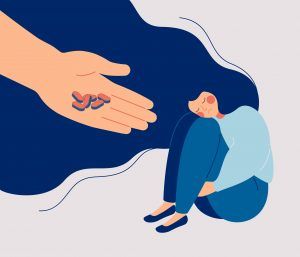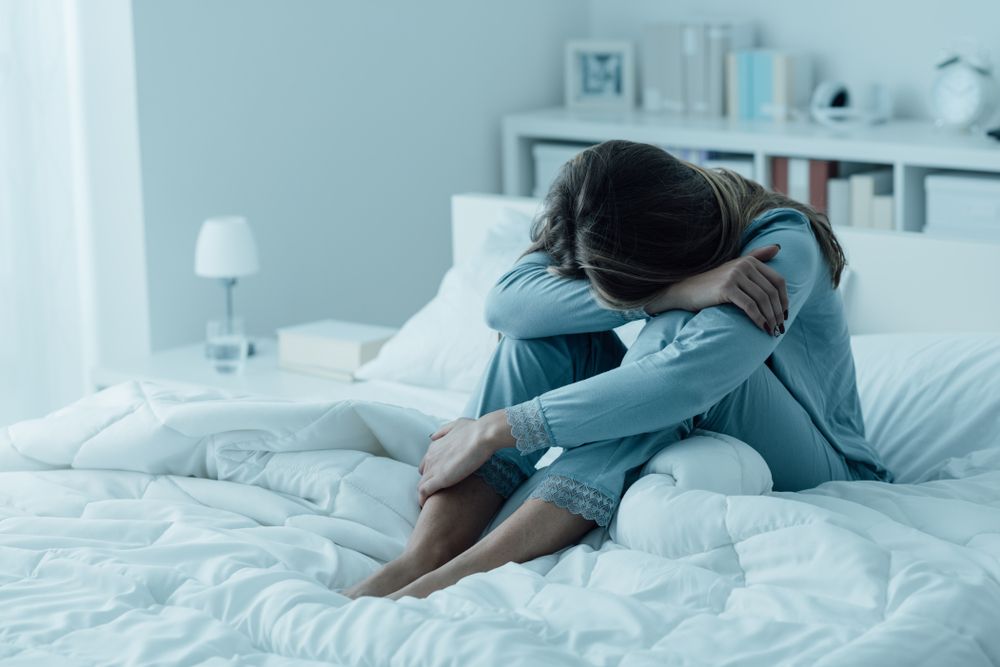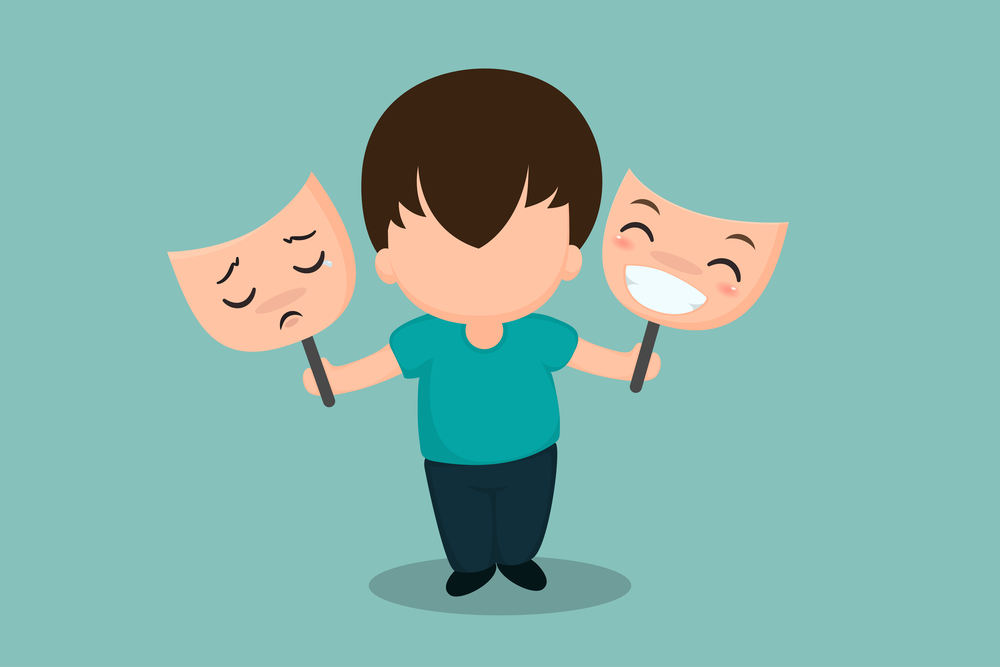Post-traumatic stress disorder (PTSD) can occur after a traumatic event. A person with the disorder cannot fully return from the fight-or-flight response that is associated with the trauma.
While PTSD is often caused by serious violence, some people can develop it after the natural death of a loved one or even after an incident that does not seem extremely traumatic to others. (Learn More)
The symptoms of PTSD are varied, and some patients may experience them more severely than others. Flashbacks, avoidance behaviors, sleep problems, memory problems, emotional outbursts, and more can all stem from PTSD. Children may wet the bed, lose their ability to speak, and show their own set of symptoms in addition to those adults tend to show. (Learn More)
Psychotherapy is essential to treating PTSD. A mental health professional can help you deal with the trauma and the symptoms it has caused. (Learn More)
Many patients will also benefit from medication. The FDA has approved paroxetine (Paxil) and sertraline (Zoloft), but doctors may prescribe other medications for off-label use too. (Learn More)
These medications all have risks and downsides. Both paroxetine and sertraline are serious drugs, but sertraline can be particularly dangerous if taken improperly.
Off-label medications used to treat PTSD are serious too. Benzodiazepines are prone to abuse and can cause addiction, and antipsychotics can sometimes have harsh side effects. Always talk to your doctor about what side effects to expect and which signal danger. (Learn More)
Dealing with PTSD can be difficult, and if treatment results are slow to come, it can be discouraging. Develop a healthy network of family and friends to make treatment easier. Aim to reduce unnecessary stress in all areas of life. Cutting toxic relationships from your life can also help with recovery from PTSD. (Learn More)
What Is PTSD?
When people experience a traumatic or otherwise frightening event, it is natural to grow tense and feel a fight-or-flight response. This is the body’s natural reaction, telling it to either combat the threat or run away. After such an event, most people will slowly calm down again, with their emotions and adrenaline levels slowly normalizing.
Post-traumatic stress disorder (PTSD) is a diagnosis given to those who do not experience that normalizing process. People with PTSD feel stressed or frightened even when the danger or trauma is gone. Oftentimes, they continue to experience those feelings months or even years after the event.
While PTSD is often associated with violent events, such as war, abuse, or sexual assault, anyone can develop the disorder. Some potential triggers for PTSD that may not be immediately obvious include car accidents or the death of a loved one (even if the death was not due to violence).
Symptoms of PTSD
It is important to realize that most people who experience a trauma do not develop PTSD. Why some develop PTSD is complex. It is believed to be triggered by a mix of factors, including genetics and neurobiology.
Those with PTSD can have their symptoms manifest in a number of ways, with some people dealing with more severe symptoms than others. Potential symptoms of PTSD include:
- Flashbacks, bad dreams, and frightening thoughts.
- Avoidance of reminders of the past trauma.
- Being easily startled, frustrated, and/or angered.
- Difficulty sleeping.
- Trouble remembering the triggering event.
- Distorted feelings of guilt or blame.
- Low opinion of oneself and/or the world.
- Difficulty being happy or enjoying previously enjoyed activities.
In children, symptoms can manifest in different ways, in addition to the above, including:
- Bed wetting.
- Being unable to speak.
- Acting out the scary event during play.
- Clinginess to a parent or guardian.
It is important to remember that none of the above is all-encompassing. PTSD can manifest in many different ways depending on the person and the nature of their trauma.
The Necessity of Psychotherapy
Talking to a mental health professional is an essential part of healing past traumas. Many people only need 6 to 12 weeks of talk therapy (called psychotherapy) consisting of either group or one-on-one sessions with a mental health professional. Others may need psychotherapy for much longer.
If you see no difference in symptoms after 12 weeks of therapy, you may consider switching therapists. It could be that you and the current therapist are not a good fit.
It is important to remember that every trauma is different, and you should not compare the help you need with the help others need. Healing mental trauma is not a race or contest; the only person you need to focus on is you.
Your mental health professional will guide you through strategies to deal with your trauma and build a positive support network. Depending on your needs, you will be given tips on how to deal with negative or inappropriate bursts of emotion, how to make sense of your trauma, how to relax and relieve anxiety, and more.
Talking with a mental health professional about your trauma is usually essential to begin to deal with it fully. In some cases, you may only need a few sessions; others may need ongoing therapy for months or years.
Depending on your situation, therapy may be supplemented with medications.
Medications to Address PTSD
The FDA has approved two medications to treat PTSD: paroxetine (Paxil) and sertraline (Zoloft). Other medications are also often used to treat PTSD if the FDA-approved solutions prove ineffective or are not a good fit.
Off-label use is not inherently bad. It just means a doctor must make sure the medication has the ability to help the patient and that the risks of using the medication off-label are accounted for.
Despite their potential side effects, paroxetine and sertraline can help a person with PTSD gain some control over their symptoms and feel a sense of normalcy. If they prove ineffective, a doctor may then try an off-label solution, such as:
- An alternate antidepressant.
- Monoamine oxidase inhibitors (MAOIs).
- Antipsychotics or second-generation antipsychotics (SGAs).
- Beta blockers.
- Benzodiazepines.
Never take illicit or recreational drugs to try to manage your PTSD symptoms. Many people with PTSD fall into abusing alcohol or drugs, but substance abuse can actually make it more difficult to gain control of your symptoms and find an effective method of treatment. If you engage in any kind of drug abuse, seek help from a substance abuse treatment professional.
If you see no improvement in your symptoms after eight weeks on a medication, talk to your doctor about alternative treatments.
Side Effects and Downsides of Medications
Both paroxetine and sertraline are selective serotonin reuptake inhibitor (SSRI) antidepressants. While similar in properties and mechanism, sertraline is more likely to have harsh side effects. Users must be especially careful to take it properly.
Both drugs can cause suicidal thoughts, which should be reported to a doctor immediately if experienced.
While the above noted off-label medications can help with PTSD symptoms, they also come with their own set of side effects and risks. Benzodiazepines, for example, are prone to abuse. Antipsychotics can cause harsh side effects that may become permanent, although second-generation antipsychotics tend to be far less harsh.
When you are prescribed any medication, talk to your doctor about what side effects to expect and which could signal a serious problem. Ask about the signs of an allergic reaction, which can include things like hives, rash, and swelling of the face, tongue, and throat. An allergic reaction can be life-threatening if you do not get help quickly after you start showing symptoms.
Never hide health conditions, including mental illnesses, when a doctor is prescribing you medication. Disclose all substances you use, including both prescription and illicit drugs. Drugs can sometimes exacerbate health conditions, especially those of the heart, and they may interact dangerously with any drugs your doctor is not aware you are also taking.
Building a Support Network
Having a positive support network is important for people with PTSD. While the stigma around mental illness has faded in the past few decades, it can still feel isolating to struggle with the disorder. A strong support network is vital to sustaining positive health.
Take up activities that support an overall healthy lifestyle, such as regular exercise, meditation, and support group participation. While lifestyle changes don’t substitute for medication and therapy, they can aid in recovery from PTSD.
References
Understanding the Stress Response. (May 2018). Harvard Health Publishing.
Post-Traumatic Stress Disorder (PTSD). (July 2018). Mayo Clinic.
Post-Traumatic Stress Disorder. The National Institute of Mental Health (NIMH).
What Are the Treatments for PTSD? (November 2017). WebMD.
Paxil vs. Zoloft. RxList.
PTSD: National Center for PTSD. (January 2019). U.S. Department of Veterans Affairs.
Treatment for PTSD. Anxiety and Depression Association of America.
Drug Allergy. (December 2017). Mayo Clinic.









